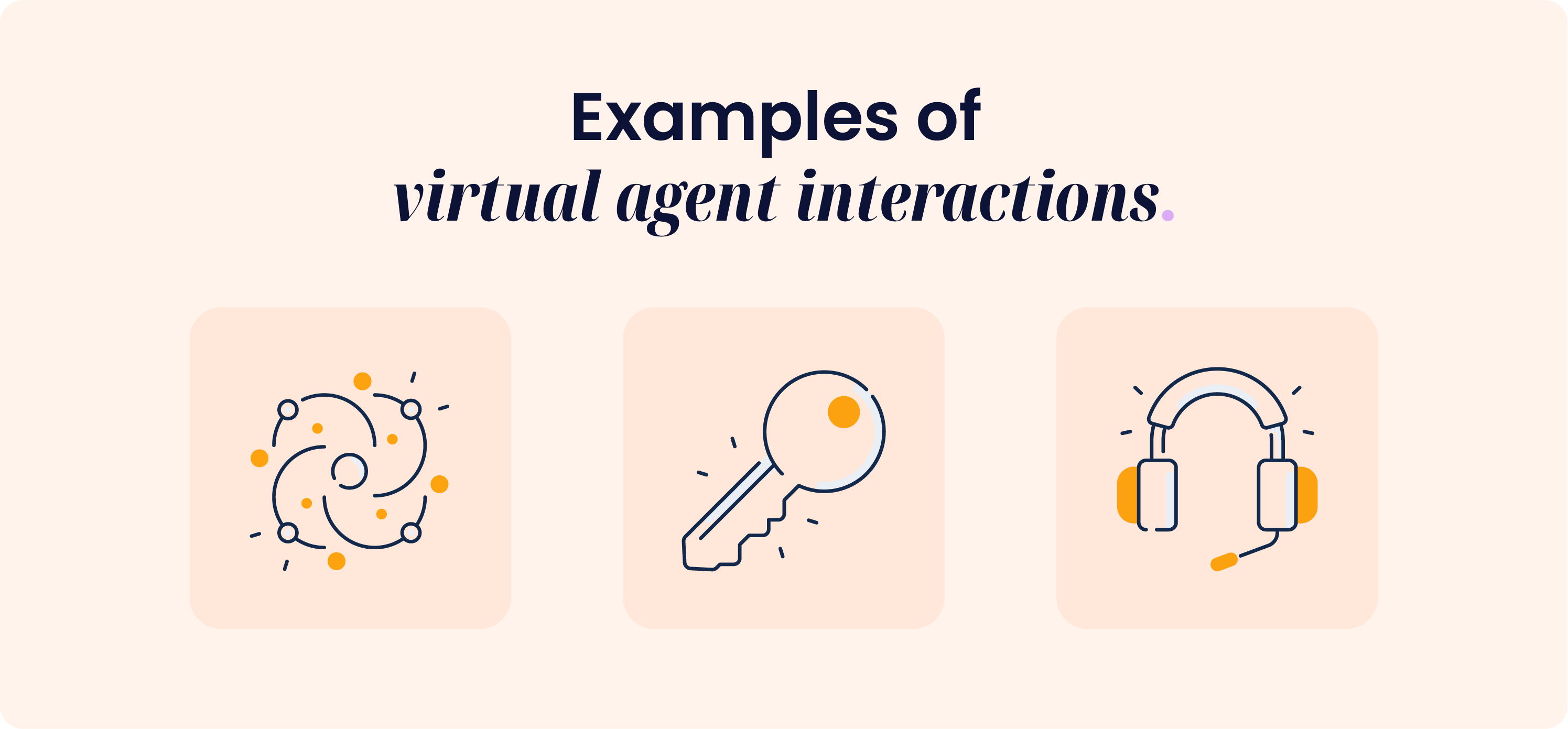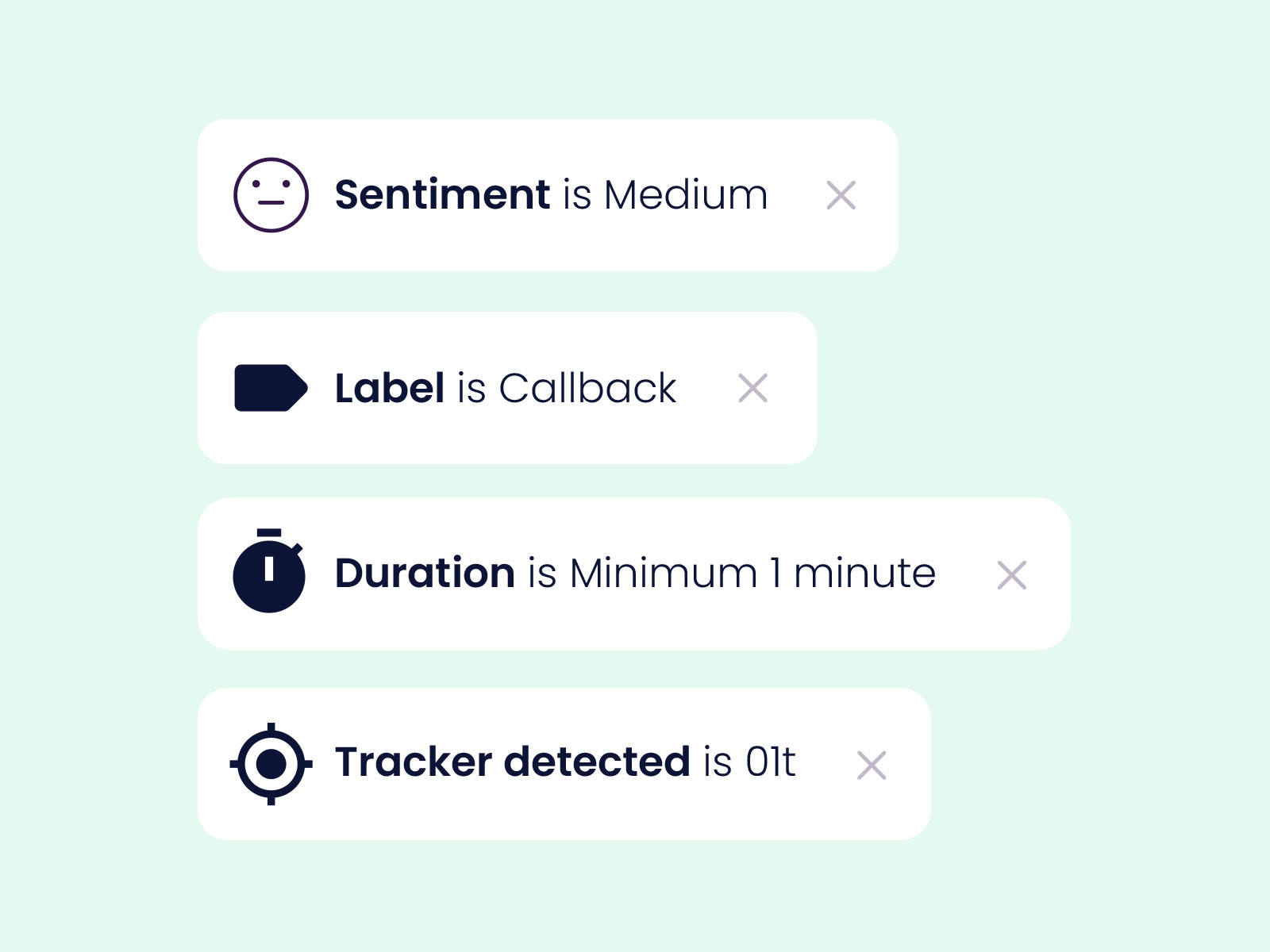Last updated: March 2025
Explore how virtual agents are reshaping customer service, their role in contact centres, and the key benefits they offer for both businesses and customers.
AI tools like virtual agents are becoming increasingly popular in customer service, helping contact centres deliver faster, more efficient support. With advancements in artificial intelligence (AI) and natural language processing (NLP), virtual agents can now handle a wide range of customer queries, from answering simple FAQs to guiding customers through complex processes. And their impact is only growing:
- The AI agents' predictive maintenance market is projected to reach $1.81 trillion by 2030, according to MarketsandMarkets.
- 65% of CX leaders agree that AI tools, like AI assistants, can reduce agent burnout and boost agent performance, making AI a powerful tool to support agents, according to Puzzel.
- A significant 64% of businesses believe that artificial intelligence will help increase their overall productivity, as revealed in a Forbes Advisor survey, according to Forbes.
- 73% of consumers agree that AI-powered assistants can help reduce wait times, according to Liveperson.
- Over 80% of employees say AI boosts their productivity (Tidio).
- 54% of companies are already using conversational AI (Tidio).
As customer expectations for fast and seamless service continue to rise, virtual agents offer a way for contact centres to scale support without compromising quality. When combined with human agents, they create a powerful hybrid workforce – automating routine tasks while leaving more time for agents to handle complex or emotional customer interactions.
But what exactly is a virtual agent, how does it work, and how can it benefit your contact centre? This guide will walk you through everything you need to know—whether you're just getting started or looking to optimise your existing virtual agents.

What is a virtual agent?
Virtual agents, also known as AI agents or AI assistants, are AI-powered software applications (also called bots) that interact with customers in a human-like way, providing automated support through text or voice-based conversations.
Virtual agents use artificial intelligence and natural language processing to understand customer intent, personalise responses, and continuously learn from interactions. These solutions are increasingly being used in customer service automation to boost customer support processes, optimise self-service capabilities, and support human agents.
How do virtual agents work?
Virtual agents rely on advanced technology to deliver seamless, human-like customer interactions. Behind the scenes, they combine artificial intelligence (AI), natural language processing (NLP), and machine learning to understand, respond to, and learn from customer queries.
The technology behind virtual agents includes:
- Artificial Intelligence (AI): Enables virtual agents to mimic human intelligence by processing information, making decisions, and generating appropriate responses based on customer input. AI algorithms help virtual agents adapt to different customer needs, providing personalised assistance at scale.
- Natural Language Processing (NLP): NLP helps virtual agents understand written or spoken language, identifying customer intent, context, and sentiment. NLP enables virtual agents to interpret complex queries, clarify ambiguous requests, and provide more accurate responses.
- Machine Learning: Machine learning (ML) allows virtual agents to improve their responses over time by learning from previous interactions. The more conversations they process, the better they become at predicting customer needs and delivering relevant solutions. Machine learning also enables virtual agents to recognise patterns and anticipate customer questions based on historical data.
- API integrations: Connects virtual agents with other business systems like CRMs, knowledge bases, or payment platforms to provide more personalised and accurate support. With API integrations, virtual agents can access customer information, process transactions, and deliver tailored solutions without human intervention.
- Speech recognition: Enables voice-based virtual agents to process spoken language, convert it into text, and generate appropriate responses. This technology allows customers to interact with virtual agents through voice commands, offering a more natural and convenient experience.
- Sentiment analysis: Helps virtual agents gauge customer emotions and adjust their tone and responses accordingly. By identifying frustration or satisfaction in customer messages, virtual agents can escalate issues to human agents or offer more empathetic replies when needed.
- Context awareness: Advanced virtual agents can maintain context throughout a conversation, remembering previous interactions and personalising responses based on customer history. This creates more seamless, human-like conversations and reduces the need for customers to repeat themselves.
By combining these technologies, virtual agents can provide efficient, personalised, and consistent support across multiple channels, helping businesses deliver better customer experiences at scale.
Common use cases for virtual agents in customer service
Virtual agents can be used across different channels – including chat, email, social media, and voice – to automate various customer service tasks. Some of the most common use cases include:
- Answering frequently asked questions
- Providing order updates and delivery tracking
- Assisting with account or subscription management
- Troubleshooting technical issues
- Routing customer queries to the right department
- Collecting customer feedback
By taking care of repetitive tasks, virtual agents free up live agents to focus on more complex or sensitive customer enquiries – improving both efficiency and customer satisfaction.
How virtual agents process customer queries
Virtual agents follow a structured process to handle customer queries efficiently:
- Input recognition: The virtual agent receives the customer’s question through chat, voice, or another digital channel.
- Intent detection: NLP analyses the message to understand the customer’s request and intent.
- Information Retrieval: The virtual agent searches its knowledge base or integrated systems for the correct response.
- Response generation: The agent delivers a personalised, human-like reply to the customer.
- Escalation: If the query is too complex, the virtual agent transfers the conversation to a human agent.
- Learning and improvement: The virtual agent learns from each interaction, improving future responses.

Examples of virtual agent interactions
- A customer asks about their order status on a retailer’s website. The virtual agent retrieves tracking information from the company’s CRM system and provides the latest update.
- A customer contacts a utility provider to reset their account password. The virtual agent verifies their identity and guides them through the reset process.
- A telecom customer asks for help troubleshooting their Wi-Fi connection. The virtual agent suggests common solutions and escalates the issue to a live agent if necessary.
Benefits of virtual agents for contact centres
Virtual agents are more than just a cost-saving tool – they play a key role in improving both customer and agent experiences.
Virtual agents improve efficiency and response times
Virtual agents can handle multiple customer queries at once, significantly reducing wait times and ensuring customers get answers faster. This helps contact centres manage higher volumes without compromising on service quality.
Virtual agents can reduce costs
Automating routine tasks with virtual agents can lower operational costs by reducing the number of enquiries that require live agent support. This allows contact centres to optimise resources and allocate agents to more complex tasks. Research from Juniper predicts that virtual agents will help businesses save $8 billion annually by 2025.
Virtual agents support human agents and CX teams
By taking care of repetitive queries like order tracking or password resets, virtual agents free up live agents to focus on more challenging, high-value interactions. This not only boosts agent productivity but also helps prevent burnout. Additionally, virtual agents can act as digital assistants for human agents, providing real-time information and suggested responses during customer conversations.
Virtual agents can increase customer satisfaction
With 24/7 availability and faster response times, virtual agents improve the overall customer experience. When combined with human agents, they create a seamless support journey – balancing automation with personalised, human care. Research by Salesforce found that 61% of customers prefer to use self-service options for simple enquiries, making virtual agents an essential part of a modern customer service strategy.
Are virtual agents replacing human agents?
While AI solutions like virtual agents are gaining popularity, the question often remains: Will virtual agents replace humans? While this concern sparks debate, the reality is far more balanced. According to our research, 43% of CX leaders believe the future lies in a hybrid model, where AI and humans work together. This sentiment grows even stronger for businesses with 500-999 employees, with 50% supporting this view. Meanwhile, 29% of leaders predict humans will remain central in customer service, and only 15% think AI will fully take over routine tasks.
Virtual agents are best suited to handle routine, repetitive tasks – freeing up human agents to focus on more complex, emotionally sensitive, or high-value interactions. This collaboration creates a hybrid workforce where humans and AI work together to deliver faster, more efficient, and more empathetic customer service.
Instead of replacing jobs, virtual agents enhance the role of human agents by taking care of time-consuming tasks like:
- Answering FAQs
- Processing simple requests
- Gathering customer information
This allows human agents to dedicate more time to building relationships, solving problems, and delivering personalised service.

The future of virtual agents in customer service
Virtual agents are set to play an even bigger role in customer service as technology continues to advance. With AI becoming more sophisticated, virtual agents will move beyond simple automation—helping businesses deliver more personalised, empathetic, and proactive customer experiences.
One key trend shaping the future of virtual agents is conversational AI. As AI models become even more advanced, virtual agents will be able to engage in more natural, flowing conversations—handling complex queries and offering more human-like interactions.
Hyper-personalisation is another exciting development. By using customer data and predictive analytics, virtual agents will be able to offer tailored recommendations, anticipate needs, and provide proactive support—helping businesses strengthen customer relationships.
We’re also likely to see more virtual agents with multilingual capabilities, making it easier for global businesses to provide consistent support across different languages and regions.
The rise of emotional AI will take virtual agents' capabilities even further—allowing them to detect customer emotions in real time and adjust their tone and responses accordingly. This will help create more empathetic, supportive experiences for customers.
Looking ahead, virtual agents will become essential partners in the contact centre—working alongside human agents to form hybrid teams. While virtual agents handle routine tasks, human agents will have more time to focus on complex or emotionally charged interactions—creating a balance between speed, efficiency, and empathy.
By embracing the latest advancements in AI, contact centres can unlock the full potential of virtual agents—improving customer experiences, supporting agents, and making customer service more efficient.






